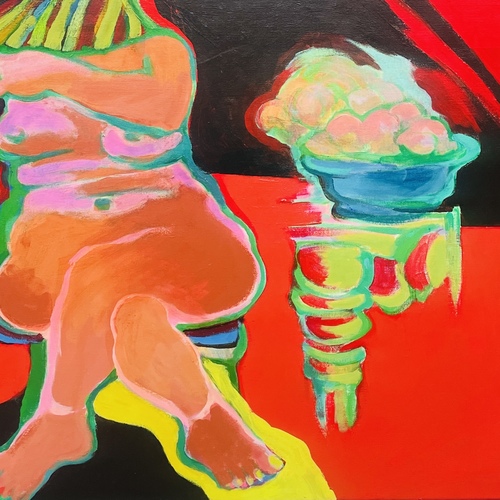Jan Neethling

Jan Neethling has, over the years, made a name for himself as a distinguished artist. For some fifty years he has creatively collaborated with one of South Africa’s foremost artists, Robert Hodgins. Until recently, Jan was largely unknown outside of Johannesburg. This, was partly due to his own modest and introvert nature, as well as to the generous attitude with which he unconditionally welcomed and supported each and every success Robert Hodgins achieved with is art. There is no doubt, however, that from the moment they met, Robert became Jan’s mentor and muse.
Jan Neethling’s surprisingly animated figures dominate his canvasses. He is an accomplished painter of life on the move, and even the occasional landscape or still-life he produces will seem as much concerned with the human absence, as they might with a table leg, objects in a room, trees or the lie of the land. They display the same brushstrokes and sense of living presence that we see in the figurative pictures.
It has always seemed that he has been distinguished by two characteristics in his approach to image-making: he is a wide-eyed and impressionable recorder of human activity, but also a skilled and formal technician, hardworking and disciplined in his approach to his materials and subjects.
Neethling grew up in a close and cultured family. Due to his father’s diplomatic career he learned early to observe and react to a new green land when they lived in Canada in the first few years following World War II. He cites this exposure at an impressionable young age as fostering his first wanting to draw and paint, and he later excelled in art at school back in South Africa. His high school and arts college education encouraged the figurative element of his work and instilled the discipline ways of the period: specialist teachers taught different media, it was required to learn a solid foundation in each, as well as develop rigorous standards in the preparation of materials, surfaces, and the techniques required before evolving a personal style. He acquired skills not only in painting, sculpture and drawing but also in graphic processes including silkscreen, then very much a new way of working. He made acquaintance who provided access to a social context of arts, literature and music, and also developed his interest in photography. All this provided the basis for experimenting with combinations of medium, becoming open to new processes, and being willing to use his own photographs, and the images of popular culture, as the basis of his paintings.
While he has painted and exhibited since the 1970’s, this was mainly in collaboration with, or alongside his lifelong friend and mentor, the late Robert Hodgins, and only in more recent years has Neethling painted regularly and exhibited consistently for himself. There are many who believe this career was long overdue for a steeper trajectory. Long self-effacing and modest in promoting his own work, he has frequently been seen as self-sacrificing in his stalwart support for Hodgins’ career.
Yet the artist himself sees the long development as having been necessary, a steady evolution of his main cast of characters in what we like to call his “theatre of life”. It is true that he and Hodgins actually inspired one another, and that each learned from the other as their years of working together went by. He ventures that he has only recently found and exercised his own artistic voice but that his was always strongly encouraged by Hodgins.
Read More







